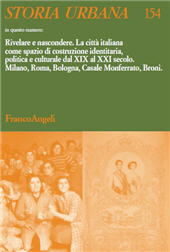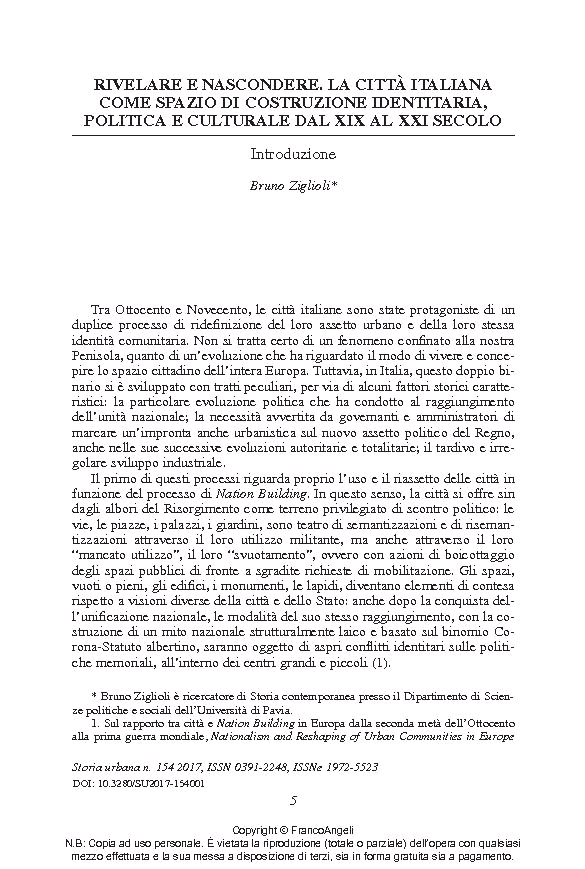Rivelare e nascondere : la città italiana come spazio di costruzione identitaria, politica e culturale dal XIX al XXI secolo
5-9 p.
The essay explores alternative strategies that patriotic élites or minorities of the Risorgimento devised to publicly demonstrate dissent, using rituals and symbols almost as substitutes for an impossible iconoclasm. In the first part, post-1848 Milan is examined, when local élites succeeded in turning two official visits by Emperor Francis Joseph into fiascos. The second part approaches the question of monuments by two significant cases: a statue representing Italy as a woman compiling a list of her first generation of martyrs, hidden in a private garden until 1859 and then offered to the citizens' eyes in a newly conceived public garden; the monument to Emperor Napoleon III: stinging cleavages from the post-Risorgimento prevented the statue's displacement from its "provisional" location for 45 years, as late as 1927 under the Fascist regime. [Publisher's Text].
Fait partie de
Storia urbana : rivista di studi sulle trasformazioni della città e del territorio in età moderna : 154, 3, 2017-
Articles du même numéro (disponibles individuellement)
-
-
Informations
Code DOI : 10.3280/SU2017-154001
ISSN: 1972-5523



